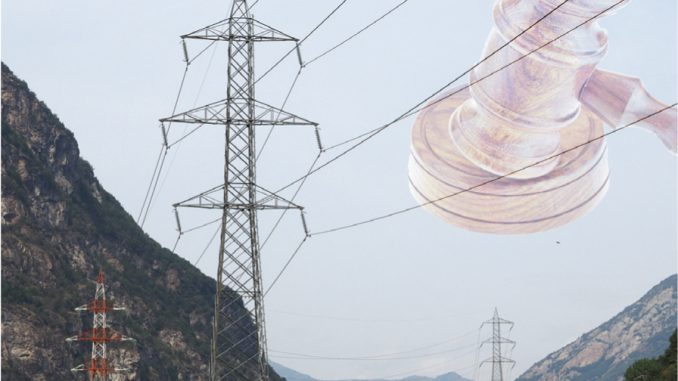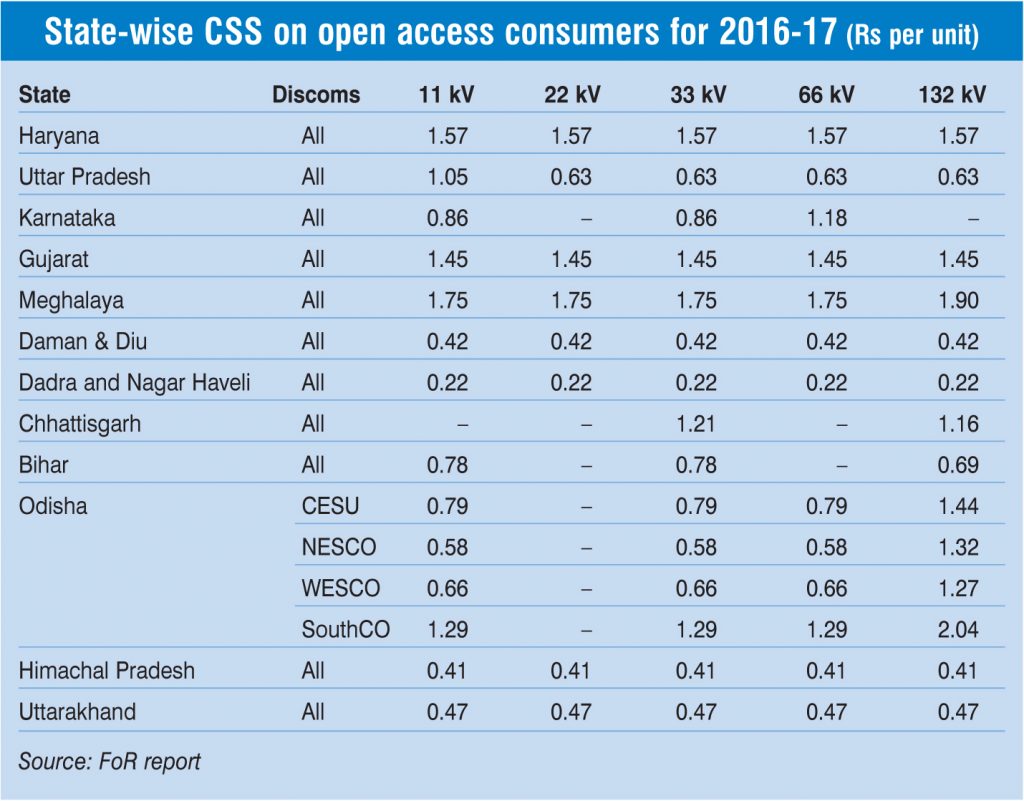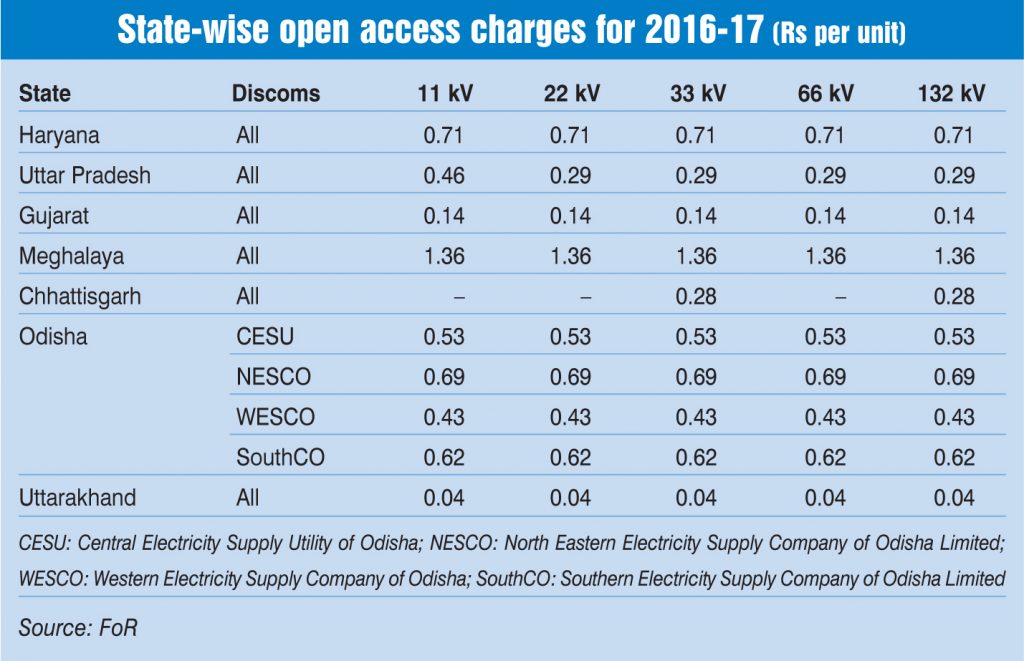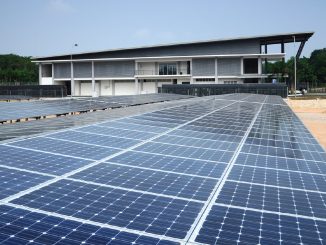
While the Electricity Act, 2003 allows open access to facilitate competitive sale and purchase of power, its implementation in the country has been a long-standing issue. The non-uniform imposition of various open access charges across states, state governments’ opposition to open access, infrastructural hurdles and the need to ensure the financial well being of the discoms have disrupted open access transactions.
The Forum of Regulators (FoR) has recently released a report on open access to discuss various issues in the space including tariff and non-tariff barriers and the impact of open access on the revenue inflow of distribution utilities. The report gives recommendations on these issues as well as on the Ministry of Power’s (MoP) consultation paper on open access.
Tariff barriers
According to the FoR report, tariff barriers such as open access charges, cross subsidy surcharge (CSS) and additional surcharge, levied by the state regulators, restrict open access transactions. CSS is applicable to all intra-state and interstate open access consumers irrespective of whether the power supply is through the distribution licensee’s transmission and distribution network or not. Consumers that have captive generating stations are exempted from paying CSS.
An open access consumer also needs to pay an additional surcharge to meet the fixed cost arising out of the distribution licensee obligation to supply electricity. However, the additional surcharge is not levied on individuals for carrying the electricity from a captive generation plant to the destination of their own use.
Non-tariff barriers
A number of non-tariff barriers have also been put in place by various states to restrict open access, as per the report. The open access regulations of Haryana, Uttarakhand, Punjab, Delhi and Telangana have provisions for restricting open access to the consumers connected to the grid through independent feeders or mixed feeders. Besides, Section 11 of the Electricity Act, 2003 allows the state governments to restrict open access citing extraordinary circumstances. Further, section 37 of the act allows them to issue directions to their respective state load despatch centres (SLDCs) to restrict the sale of power outside the state for maintaining smooth and stable power supply in the state.
Another challenge in the open access space pertains to the scheduling of power. The open access consumers need to submit a daily schedule of power to be purchased to the SLDC (with a copy to the respective discom) by 10 a.m. for the next day. In states such as Rajasthan, the schedule needs to be uniform at least for a period of eight hours and the minimum schedule during the day should at any time not be less than 75 per cent of the maximum schedule of the day.
Further, in order to avail of open access, there is a need to set up additional infrastructure such as availability-based tariff meters and special energy meters. In this regard, the high cost of setting up infrastructure and space constraints at substations pose significant challenges.
Impact on discom revenue
The open access of power impacts the revenue flow of the discoms. The majority of losses in discom revenue are on account of industrial and commercial consumers opting for power procurement from sources other than the distribution licensee. Besides, as per some of the state policies, CSS and wheeling charges are not applicable to open access from renewable sources, which puts an additional financial burden on the discoms. Also, there is no provision for the recovery of surcharge from consumers that opt for captive power procurement.
Besides this, the discoms face a number of operational hurdles. Allowing open access leads to an incremental tariff burden on non-open access consumers owing to the low levels of revenue obtained from cross subsidy and CSS. Further, granting partial open access makes peak load management difficult.
Key recommendations
Based on the analysis of the open access framework in four to five states, the FoR has given a number of recommendations. It notes that a uniform methodology is needed for the determination of various charges such as open access charges, CSS and additional surcharge. Further, there is need to leverage technology solutions and automate the processes for the issuance of no-objection certificates, energy scheduling and energy settlement. Impact assessment for discoms and open access users should also be undertaken.
The report also includes FoR’s suggestions on the MoP’s consultation paper on open access issued in August 2017. The consultation paper highlighted the issues pertaining frequent shifting of open access consumers; calculation of CSS, additional surcharge, stand-by charges; and tariff design and rationalisation.
Regarding the frequent shifting of open access consumers, the report notes that the Rajasthan Electricity Regulatory Commission’s mandate for open access customers to schedule power for at least 24 hours, is acceptable. The open access consumers should schedule minimum continuous eight hours of supply through open access.
For CSS, the report notes that calculating the surcharge based on category-wise or voltage-wise cost of supply (CoS) is not a suitable method. For high voltage consumers such as industrial consumers, CoS is less than the average cost of supply (ACoS), therefore using ACoS results in lower CSS. This adversely impacts the discom finances. Therefore, calculating CSS on the basis of the average cost of supply is suitable.
Meanwhile, the report upholds the suggestion in the consultation paper regarding the calculation of additional surcharge based on three components – stranded power under long-terms power purchase agreements, stranded physical assets and cost of carrying regulatory assets or amortisation of regulatory assets. Further, regarding the standby charges, the report notes that only 125 per cent of variable charges for each category should be applicable, since the fixed charges are already recovered in the demand charges as per the Tariff Policy, 2016. Further, since the tariff structure is not uniform across all states, the standby charge should be applicable only for long-term open access consumers. Regarding tariff design and rationalisation, the FoR agreed with the MoP’s proposal that the tariff should reflect the actual breakup of fixed and variable charges. However, demand charges are kept low so that there is minimal impact on low load and domestic consumers.
To conclude, for setting up a competitive power distribution market, allowing open access is an imperative. To this end, there is a need to ensure uniformity in open access regulations across states and safeguard the interests of both discoms and electricity consumers.






